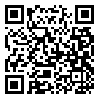Thu, Jul 18, 2024
[Archive]
Volume 7, Issue 3 (September 2011)
IJEEE 2011, 7(3): 197-202 |
Back to browse issues page
Download citation:
BibTeX | RIS | EndNote | Medlars | ProCite | Reference Manager | RefWorks
Send citation to:



BibTeX | RIS | EndNote | Medlars | ProCite | Reference Manager | RefWorks
Send citation to:
Jamali M, Mirzaie M, Gholamian S A. Discrimination of Inrush from Fault Currents in Power Transformers Based on Equivalent Instantaneous Inductance Technique Coupled with Finite Element Method. IJEEE 2011; 7 (3) :197-202
URL: http://ijeee.iust.ac.ir/article-1-342-en.html
URL: http://ijeee.iust.ac.ir/article-1-342-en.html
Abstract: (7929 Views)
The phenomenon of magnetizing inrush is a transient condition, which occurs primarily when a transformer is energized. The magnitude of inrush current may be as high as ten times or more times of transformer rated current that causes malfunction of protection system. So, for safe running of a transformer, it is necessary to distinguish inrush current from fault currents. In this paper, an equivalent instantaneous inductance (EII) technique is used to discriminate inrush current from fault currents. For this purpose, a three-phase power transformer has been simulated in Maxwell software that is based on finite elements. This three-phase power transformer has been used to simulate different conditions. Then, the results have been used as inputs in MATLAB program to implement the equivalent instantaneous inductance technique. The results show that in the case of inrush current, the equivalent instantaneous inductance has a drastic variation, while it is almost constant in the cases of fault conditions.
Type of Study: Research Paper |
Subject:
Power Transformers
Received: 2010/11/09 | Revised: 2011/12/24 | Accepted: 2011/09/17
Received: 2010/11/09 | Revised: 2011/12/24 | Accepted: 2011/09/17
| Rights and permissions | |
 |
This work is licensed under a Creative Commons Attribution-NonCommercial 4.0 International License. |







